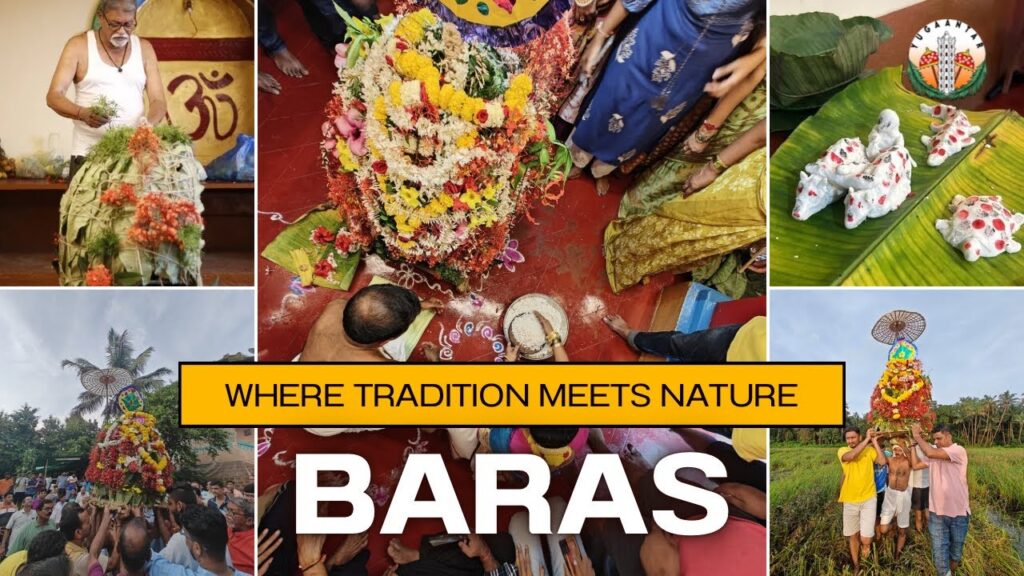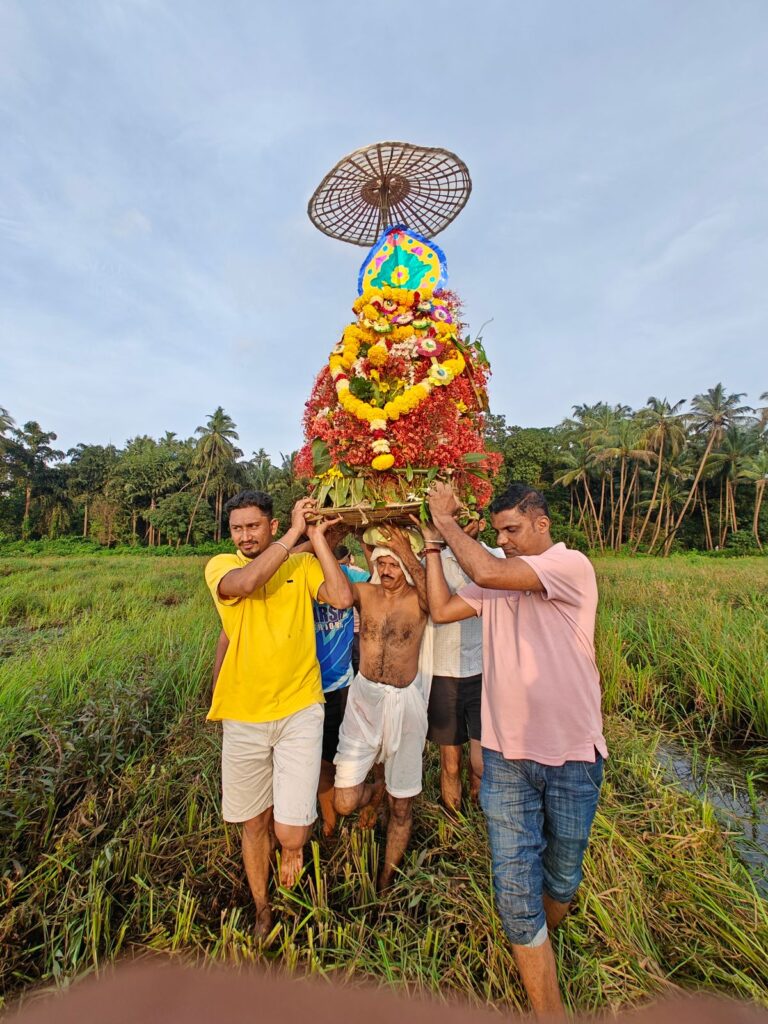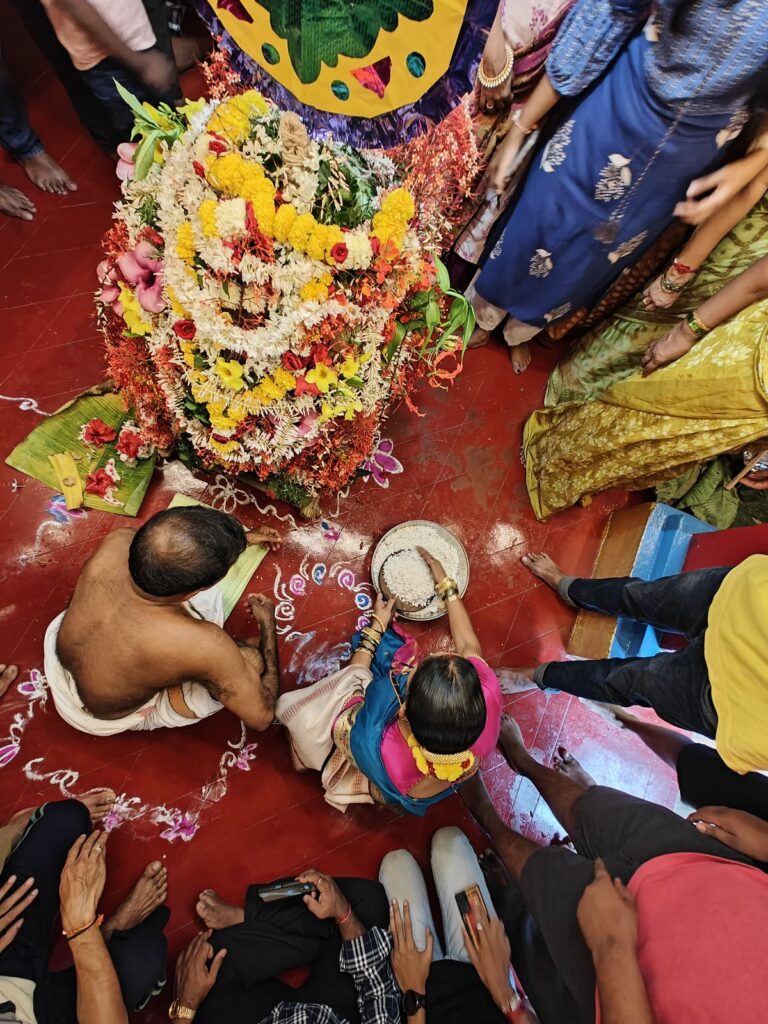
Naveli is a simple yet culturally rich village in the Bicholim taluka of Goa, where every festival and tradition symbolizes a deep connection with nature. The most beautiful example of this bond is the ‘Baras’ festival which is celebrated on the Vaman Jayanti. It is not just a religious event but a celebration that unites the villagers and worships nature. The festival is a symbol of the interaction between human life and the natural world.
There is an old, prevalent folklore behind this festival. According to the village elders, many years ago, the river near the village which is tributary of Mandavi river was home to a large number of crocodiles. These crocodiles would interfere with the farmers’ work in the fields. The farmers made a pact with the crocodiles that they would be given food every year on Bhaadrapad Dwadashi. This food would be enough to sustain the crocodiles for the entire year. This promise led to the celebration of the ‘Baras’ festival.

On the day of the festival, villagers create a beautiful canopy from bamboo. This canopy is decorated with various natural elements like ‘Karmala’ leaves, ‘Pitkuli’ flowers, jasmine, hibiscus, marigold, and wild flowers called ‘Vaghanakh’ . The area around it is adorned with rangoli designs. After this, a Brahmin performs a traditional ritual worship. Following the rituals, 11 bowls of steamed rice, a large bowl of ‘Ufar’ (a local dish), 12 servings of “pithi” 12 serving of “bhaaji of Colocasia leaves ) five varieties of leafy vegetables, and boiled dumplings are placed inside the Baras through a small opening. During this process, the host must kneel on their left knee. A woman from the family gives all these items to the host, who then places them inside the Baras. After this, a lit lamp made of coconut coir is placed inside the Baras. The Baras also contains figurines made from flour, including a pair of bulls, a plowing tool, a farmer, a crocodile, and a tortoise. Once all the food items, lamp, and flour figurines are placed inside, the opening is covered with Karmala leaves. Following tradition, a “Ghaadi” from village elder prays for everyone’s welfare. After the ritual, the Baras is lifted and placed on the head of the host. The Baras is then carried in a procession accompanied by drums and the chants of villagers to a tributary of the Mondovi River, where it is immersed by some villagers.
The Baras festival is considered auspicious for agriculture. It uses various elements of nature, symbolizing the balance between soil, water, plants, and animals. The bamboo canopy represents vegetation, immersion signifies the connection with the river, and the bull and plow symbolize farming. The food prepared for the festival holds special significance, consisting of 12 traditional dishes such as steamed rice, horse gram powder ( peeti ), colocasia, and leafy vegetable preparations made from locally grown seasonal produce. These offerings are then shared among the villagers.

Today, Navelim faces challenges like air and soil pollution. While the village still celebrates its traditional festivals, agricultural activities around the village have decreased. This calls for reflection. We cannot view such festivals as mere religious ceremonies; they force us to think about our history and culture. Our ancestors developed traditions that honored and protected the natural elements. The current generation must also understand the importance of these festivals from an environmental perspective. The lessons from the Baras festival are not just religious or cultural; they hold great significance in today’s context of environmental conservation. It is our responsibility to pass on this legacy to future generations.

The Writer is a teacher by profession. He is also an orator and founder of Yugaantar Goa. The page Yugaantar Goa is dedicated to throwing light on the history and culture of Goa.

